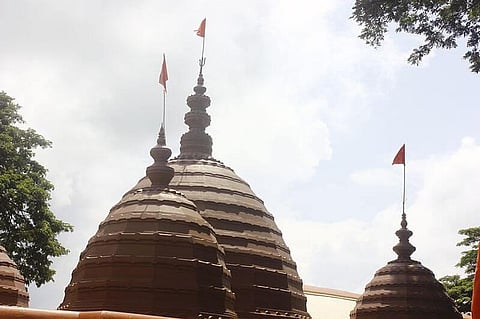
- Home
- न्यूजग्राम
- India
- World
- Politics
- Entertainment
- Culture
- Lifestyle
- Economy
- Sports
- Sp. Coverage
- Misc.
- NewsGram Exclusive
- Jobs / Internships

June 24, 2017:
At the onset of Monsoon and water dripping from the skies, five kilometres away from Guwahati, Kamakhya temple celebrates annual menstruation festival which is considered as pious as the monsoon in this Hindu practice. The fair is called Ambubachi Mela and what is worshipped is not the image of the deity but rather a process – menstruation.
The rituals are a blend of two natural phenomena which we discern distinctive of each other. The seasonal cycle of monsoon merges with female physiology, women's monthly menstrual flow and both the bodies of mother earth and female are a representation of admiration.
Sati, wife of Lord Shiva returned to her home on the occasion of ritual prayer performed by her father Dakshin, even though the duo was not invited for the holy practice. When her father condemned Shiva and publicly scorned her husband, Sati immolated herself in the sacrificial fire.
The Devi defied her father in the choice of her husband spoiled the sacrifice by despoiling it with her body. The anguished shiva trotted the sky with her anger as he dropped the remains of her beloved Sati on to the earth. Kamakhya is thus considered the peeth where her yoni (genitals) descended. The temple dwells idol in the form of yoni like the stone over which a natural spring flows.
This Mela is otherwise called Ameti or Tantric fertility festival since it is nearly connected with Tantric Shakti clique pervasive in eastern parts of India.
A Tantrik Aesthetic, Kamakhya Temple. Wikimedia
Indeed, even some Tantric Babas show up just amid these four days. Whatever is left of the year, they stay in isolation. A few Babas are seen showing their psychic forces like putting their heads in a pit and stand upright on it, remaining on one leg for a considerable length of time at an extend.
Women have continually succumbed at the helm of patriarchy ideology and oppression rather than any deliverance of the spiritual guidelines for them. Traditionally, women's menstrual blood has always been considered polluted, defiling and kept at bay from all scared things. Where goddess with menstrual cycle is worshipped in Hinduism, ironically the status of women is deemed low in India. What are we to make out of the Ambubachi Mela, where the goddess Kamakhya herself bleeds?
– by Naina Mishra of Newsgram. Twitter: @Nainamishr94
